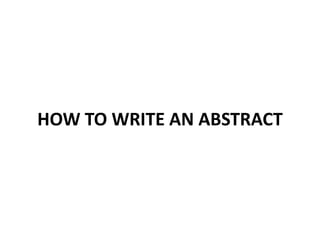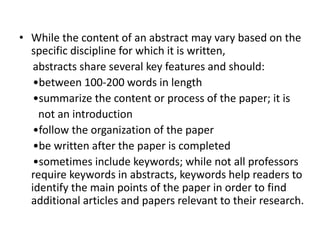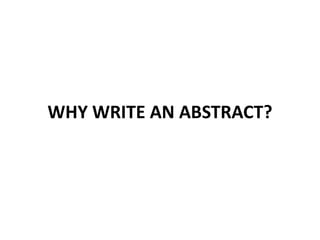This document provides guidance on how to write an effective abstract. It explains that an abstract is a short summary of completed research that attracts readers to learn more. It lists the basic components an abstract should contain, such as the topic, objectives, methods, findings and conclusions. It also provides tips for writing each component, such as stating the problem and importance upfront and concisely summarizing the key results and implications. Finally, it notes that abstracts allow readers to quickly evaluate a paper's relevance and help researchers locate articles through database searches.













